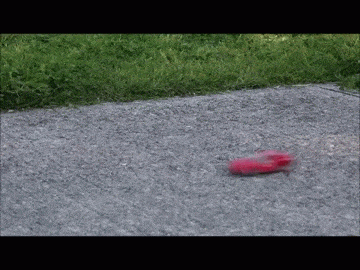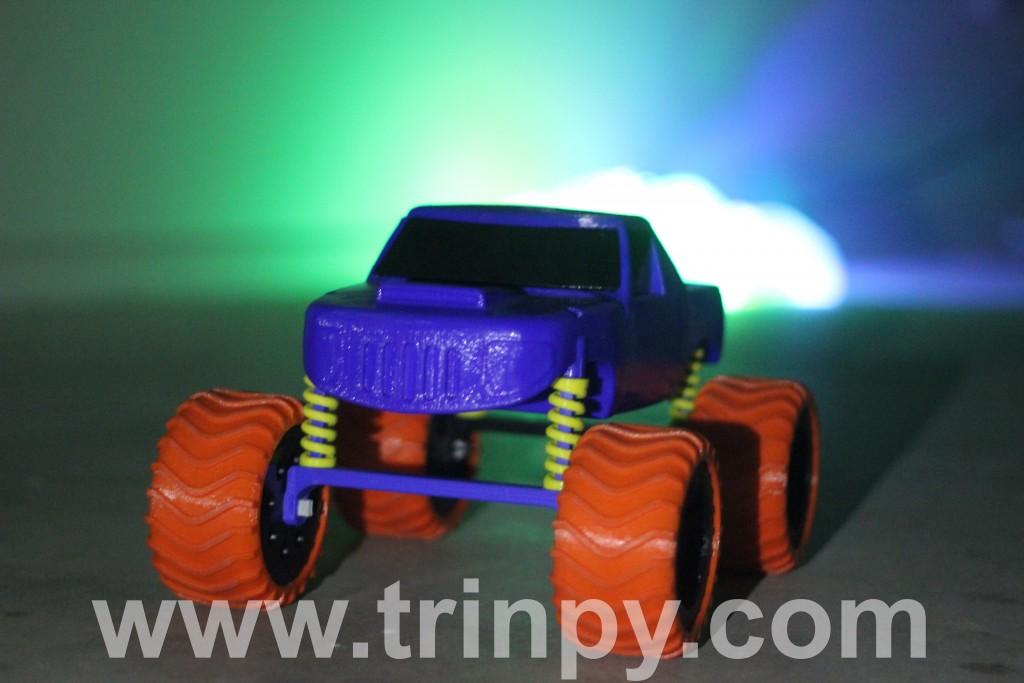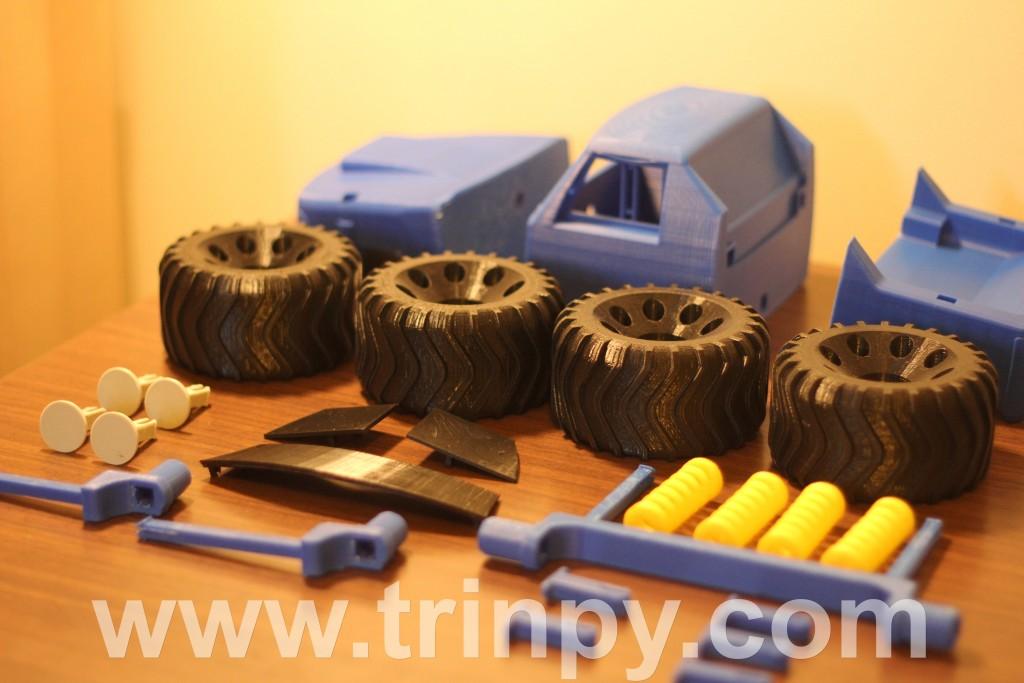 For those of you who love watching large metal pieces of machinery defy gravity and exhibit speed, then Monster Jam may be just the thing for you. For those of you who haven’t ever had the opportunity to attend or watch a Monster Jam event on TV, it’s basically a competition for monster truck drivers, consisting of racing and various freestyle competitions.
For those of you who love watching large metal pieces of machinery defy gravity and exhibit speed, then Monster Jam may be just the thing for you. For those of you who haven’t ever had the opportunity to attend or watch a Monster Jam event on TV, it’s basically a competition for monster truck drivers, consisting of racing and various freestyle competitions.
For one such fan of Monster Jam, who we have covered previously, when he launched his website Trinpy, 3D printing was the perfect opportunity to create something he loves — a monster truck!
“I really like designing objects that are functional rather than objects that just sit on shelves because I believe that is a waste of a 3d printers potential,” Trinpy founder Andrew Karas tells 3DPrint.com. “I like watching Monster Jam so I suppose that is where I got the initial idea from. In terms of designing it I just looked at a picture of a body of a monster truck that I liked and started modeling it, and then once I had the body shape I cut out a few holes for windows and modeled them up.”
Obviously a skilled 3D modeler, Karas also prefers not to use paint on his 3D printed objects, but rather print out the parts themselves in the colors of his choosing. Because he wanted his monster truck to be functional, it required that he create multiple parts which would then be assembled together once printed. This included the design for a suspension system as well as fully rotating wheels. Using a design for a Pogo stick he had created a while back, Karas modified it to work as his truck’s suspension.
The design for Karas’ monster truck is entirely 3D printed, and includes 30 individually printed parts, 26 of which were printed in ABS plastic. The other four parts (the orange wheel covers) were printed in flexible NinjaFlex filament. The printing process took a staggering 100 hours to complete, not including all of the prototyping and iteration that the design required.
“All the parts clip together with 3D printed clips included in the design, and the windows clip onto the body,” Karas tells us. “What I did for this version was to glue the 3 body pieces together with an acetone/abs slurry for extra strength and to make it look smoother. Then the final truck was put into an acetone vapor bath to get the smooth finish for the entire truck. The wheels and suspensions assemblies just clip together and no glue or joining is required. I really wanted to make the whole truck easy to assemble and remove any need for additional joining.”
The truck’s body is printed in 3 separate pieces itself, in order to fit onto Karas’ MakerBot Replicator 2X 3D printer. Each of these pieces took about 12 hours to print out. The wheels each took an additional 6 hours to print.
The end result, as you can see in the video and photos provided, is really quite amazing. It can travel over bumpy terrain pretty well, and it “has a suspension travel of about 20mm per wheel.” The truck measures just about 1 foot in length and uses about 2.1kg of filament to print. Karas has made the design files free to download on his website.
What do you think about this design? Will you be 3D printing it yourself? Discuss in the 3D Printed Monster Truck forum thread on 3DPB.com. Check out the video below.
Subscribe to Our Email Newsletter
Stay up-to-date on all the latest news from the 3D printing industry and receive information and offers from third party vendors.
You May Also Like
Gorilla Sports GE’s First 3D Printed Titanium Cast
How do you help a gorilla with a broken arm? Sounds like the start of a bad joke a zookeeper might tell, but it’s an actual dilemma recently faced by...
Nylon 3D Printed Parts Made More Functional with Coatings & Colors
Parts 3D printed from polyamide (PA, Nylon) 12 using powder bed fusion (PBF) are a mainstay in the additive manufacturing (AM) industry. While post-finishing processes have improved the porosity of...
$25M to Back Sintavia’s Largest Expansion of Metal 3D Printing Capacity Since 2019
Sintavia, the digital manufacturing company specializing in mission-critical parts for strategic sectors, announced a $25 million investment to increase its production capacity, the largest expansion to its operations since 2019....
Velo3D Initiates Public Offering in a Bid to Strengthen Financial Foundations and Drive Future Growth
Velo3D (NYSE: VLD) has been among a number of publicly traded 3D printing firms that have attempted to weather the current macroeconomic climate. After posting a challenging financial report for 2023,...



































